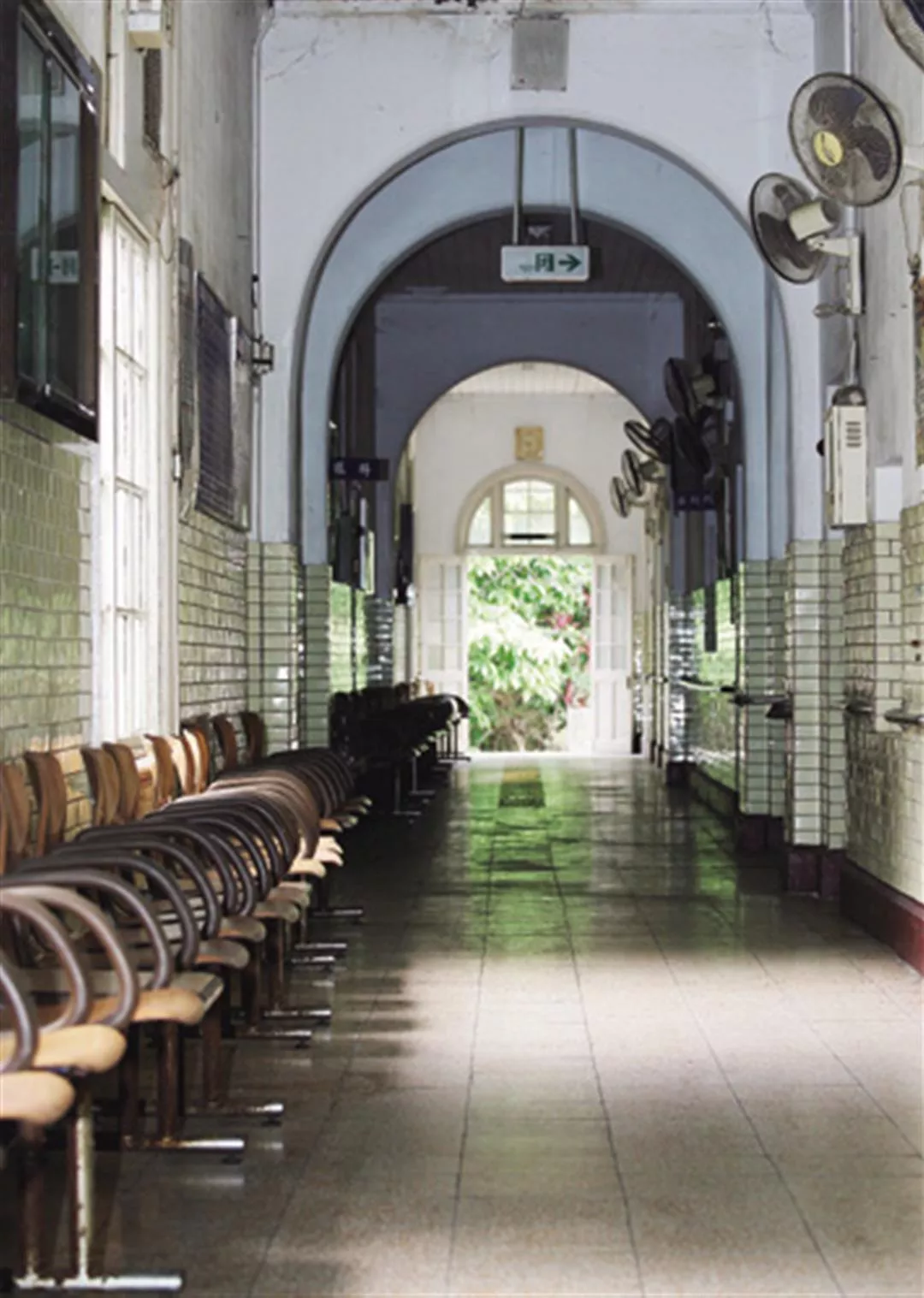Streams of tears
When Losheng stopped admitting new patients in 1996, after more than 70 years, there were more than 300 people living within the foliage-enshrouded dormitory area. But even earlier, in 1994, plans for the Hsinchuang Line had been completed, with the sanatorium site earmarked for use as a train maintenance yard. The seeds of today's struggle over Losheng's preservation were sown at that time.
In fact, in 2001 the sanatorium management intended to apply for historic building status for Losheng and asked the Taipei County Government to come and investigate. However, the county government said they could not consider the case because the MRT line had already been planned. The same year, legislators including Luo Wen-chia addressed this issue, and asked the Council for Cultural Affairs (CCA) to convene an emergency hearing.
Yet the attitude of the CCA at that time was not very positive regarding this cultural preservation dispute. The Taipei City Department of Rapid Transit Systems (DORTS), an interested party in the dispute, was also unresponsive, and bulldozers closed in on Losheng, tearing parts of it down. At the same time, a plan to build a new hospital area and help patients move there was carried out.
By March 2007, 175 of over 300 sanatorium patients had moved into a new building adjacent to the old one and 49 had returned home or moved into the community. The level of satisfaction of patients who moved into the new building was quite high. Despite this, 70 patients remain unwilling to relocate into the new facility, insisting on staying in the sanatorium where they have lived for decades.
These elderly patients, averaging 75.2 years of age and having lived in the hospital as long as 42.5 years, have little recollection of the homes they left while still young. In the Losheng dormitories, encircled by green trees and chirping birds, they have whiled away the years in the company of old friends; this undoubtedly is the best destination for their twilight years. Whether from simple nostalgia or refusal to be trifled with by government authorities again, these old folks are acting on their final, humble wish to defend their home turf, giving legitimacy to Losheng's preservation.
Secondly, in terms of preservation for the sake of community memory, Losheng Sanatorium is the only existing historic site that is witness to the modern history of epidemic control in Taiwan, and also offers an excellent opportunity to meditate on patients' rights. In post-SARS Taiwan, after the experience of the onslaught of an emerging epidemic, Losheng's value is even more evident.
Involving patients' rights and cultural value, the issue of Losheng's preservation has attracted great support from cultural circles as well as social organizations such as the Losheng Youth Alliance. After years of construction work, about 70% of the left and right sections of the original sanatorium campus has already been dug up, and with the imminent demolition of the remaining central area, calls for preservation have been mounting.
In 2005, the protests of the Losheng Youth Alliance began to grab public attention, drawing support from such figures as film director Hou Hsiao-hsien, Professor Hsia Chu-joe of NTU's Graduate Institute of Building and Planning, and Japanese theater director Daizo Sakurai. That November, the alliance and these celebrities allied with students from numerous universities in a protest movement for the Losheng Sanatorium residents. They besieged the CCA, calling for them to immediately proclaim Losheng as a provisional historic site.
The CCA accepted the proposal. Then in March 2006, the Taipei County Government organized a committee to evaluate the site. However, despite the case's having grown into a national issue, the committee acknowledged that Losheng has value as a national cultural asset, but declined to designate it a historic site.
Shortly thereafter, after consulting DORTS the county government proposed a "partial preservation" plan for the remaining 41% of the site, and suggested the two main buildings should be preserved by taking them and reassembling them elsewhere. The proposal was supported by the Executive Yuan, but did not satisfy the protest groups. In February 2007, the CCA commissioned the British engineering consulting firm Mott McDonald Group to do a study, and then proposed a new plan to preserve 90% of the remaining campus.
The CCA gradually solidified its stance from declaring the sanatorium a provisional historic site to proposing the 90% preservation plan. But Hsinchuang's civic representatives, eager for the deadline for the MRT line's opening to be met, fear that should the issue not be settled soon, the opening will be delayed indefinitely. So at the end of March a number of Taipei County councilors held a 10,000-strong march, expressing their indignation and concern at the government's postponing MRT construction for the sake of Losheng.

Hidden in the mountains of Hsinchuang, the main grounds of the Losheng Sanatorium are now a barren expanse, having ceased operation years ago. But now that the area is seen as a valuable cultural asset, it has once again become a center of attention.